
Yes, you read correctly. There is no sargassum on Isla Mujeres. This is because of his privileged location.
But before going into details, let’s go part by part.
Do you already know what sargassum is?
We explain it to you below.
Everything about Sargassum.
In this section, we present you with some information about these macroalgae. It began to arrive in 2014. Since then, its presence has been felt every year. Some of them with more frequency.
What is sargassum?
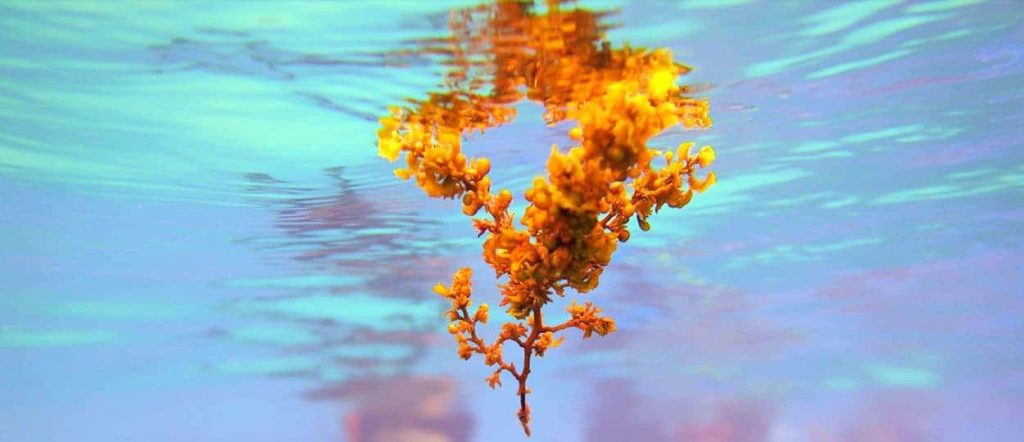
Sargassum is a genus of large brown seaweed (a type of algae) that floats in island-like masses and never attaches to the seafloor. They inhabit tropical seas around the world.
It is characterized by having structures called aerocysts. They are small balls filled with gases that help the sargassum not to sink. As a result, they are seen floating on the beaches.
Normally, It serves as an important habitat for many marine species. It provides food, shade, and shelter for fish, shrimp, crabs, and turtles.
There are seasons in the year when its presence is minimal, and in seasons when the sargassum crisis is acute, there are always crews dedicated to collecting the seaweed from the beaches.
Where does sargassum come from?
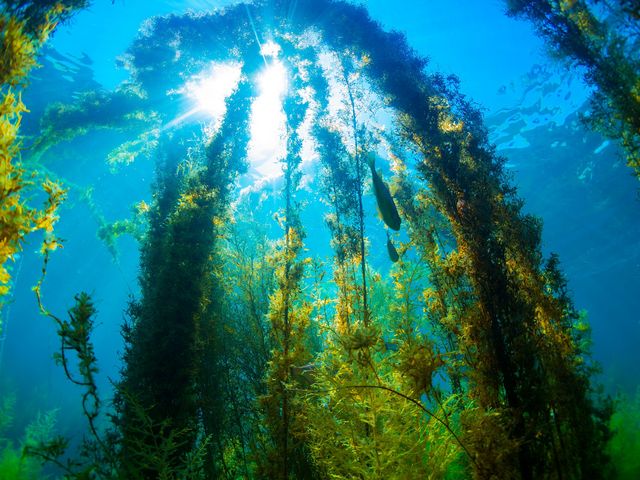
The sargassum that reaches the Caribbean coast comes from two places:
In front of Brazil, in the north of the terrestrial equator and the Sargasso Sea.
First of all, we have the Sargasso Sea. It is in the North Atlantic Ocean.
It is formed thanks to the marine currents that circulate in a clockwise direction. As a result, the algae gather at this site.
Typically, cyclones and hurricanes help the sargassum from this region to spread to our beaches.
However, in recent years large numbers have been seen reaching the Caribbean shores. But without the need for hurricanes.
This phenomenon is due to increased pollution and global warming. By having more heat and organic material, the ideal environment is created for these algae to increase their growth rate.
That created the second place where they come from:
Northern Ecuador. They accumulate off the coast of Brazil and, thanks to marine currents, enter the Caribbean.
When does sargassum arrive?
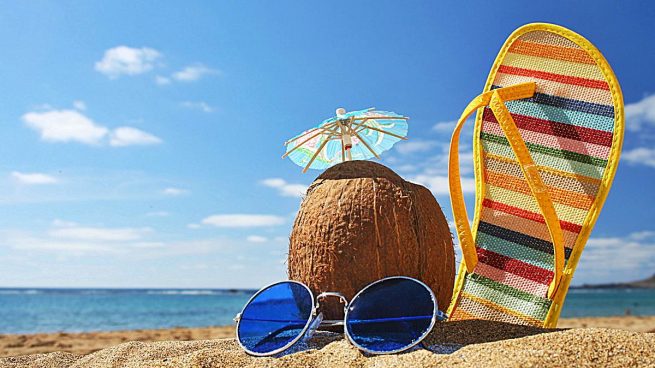
The appearance of this phenomenon for a few years now has allowed biologists to observe a pattern.
In the Riviera Maya, due to air currents, sargassum begins to affect from April.
It begins with the arrival of spring and warmer temperatures and lasts until September. But it peaks during the summer.
How does sargassum affect?
Sargassum is a seaweed that has recently been multiplying in an atypical way in the Caribbean Sea. It is affecting the ecosystem, marine life, and the tourism industry in 19 countries including Mexico and U.S.A.
As an invasive species, it affects at different levels:
Sargassum affects the view of the place.
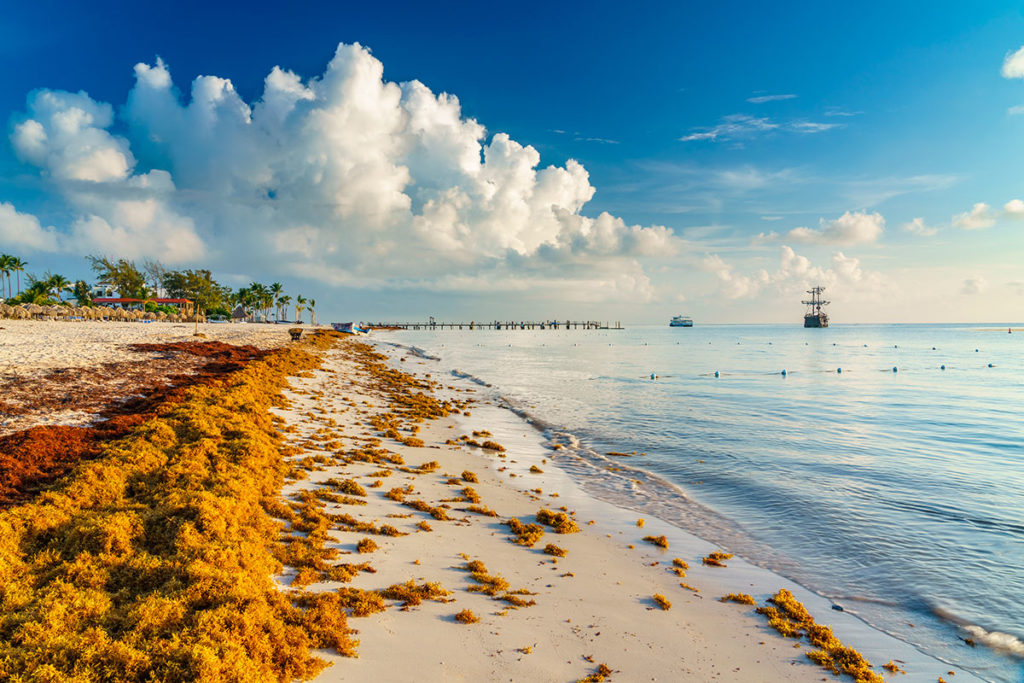
This is the most noticeable when you get to the beaches. That blue sea of white sand is covered in sargassum that turns it brown or yellow and takes away its charm.
When there are massive arrivals, the same citizens organize days to clean the beaches. In addition, different mechanisms to contain it in the sea are already being studied:
Specialized nets, vessels to remove it at sea, and even barriers inside the sea.
How can I be sure there is no sargassum on Isla Mujeres?
You can check the state of the beaches from wherever you are through the following link. These monitoring are done daily, so the information will be updated.
As you can see, there is no sargassum on Isla Mujeres. Therefore, they are always an ideal option to enjoy all the attractiveness that the beautiful Caribbean Sea offers.
Sargassum affects native species.
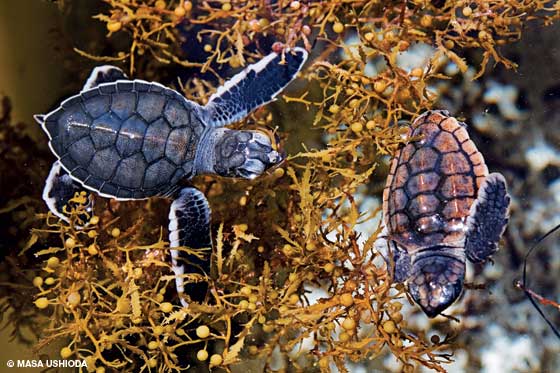
The presence of sargassum on the beaches of Cancun is not considered a serious risk to people’s health. But it can be toxic to some marine species.
In adequate quantities, this algae helps the proper functioning of the ecosystem. Its excess harms by causing an absence of light and lack of oxygenation.
By floating in the waters where seagrasses and coral reefs are, blocks the passage of light and prevents the photosynthesis of the species.
It also affects turtles, since, as we talked about in one of our blogs, they come to the Riviera Maya every year.
When the hatchlings are born, they immediately seek to reach the sea. If it encounters sargassum, the young can be trapped and become easy prey for predators.
Sargassum affects beachgoers
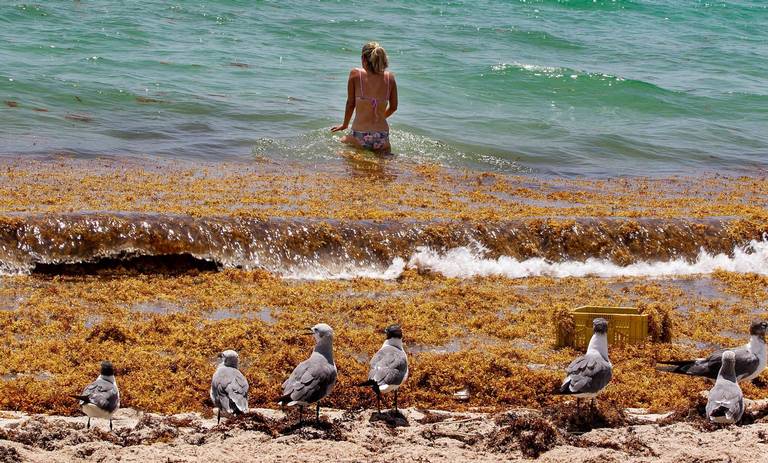
Bathing in waters full of algae is not a pleasant experience because of various reasons.
To begin with, it makes swimming difficult. Since these macroalgae will always be on the surface, they could interfere with mobility.
Also, they can be the habitat of small crustaceans that usually cause hives on contact with the skin, which is quite annoying.
And as these decompose, they give off an unpleasant odor and release gases. Those are capable of causing dizziness and headaches in sensitive people.
How do I prevent sargassum from being a problem for my holidays?
You don’t need to cancel your plans to visit these beautiful beaches.
Just take a few simple measurements. Thus, your vacation will continue to be a dream.
Identify sargassum-free beaches.
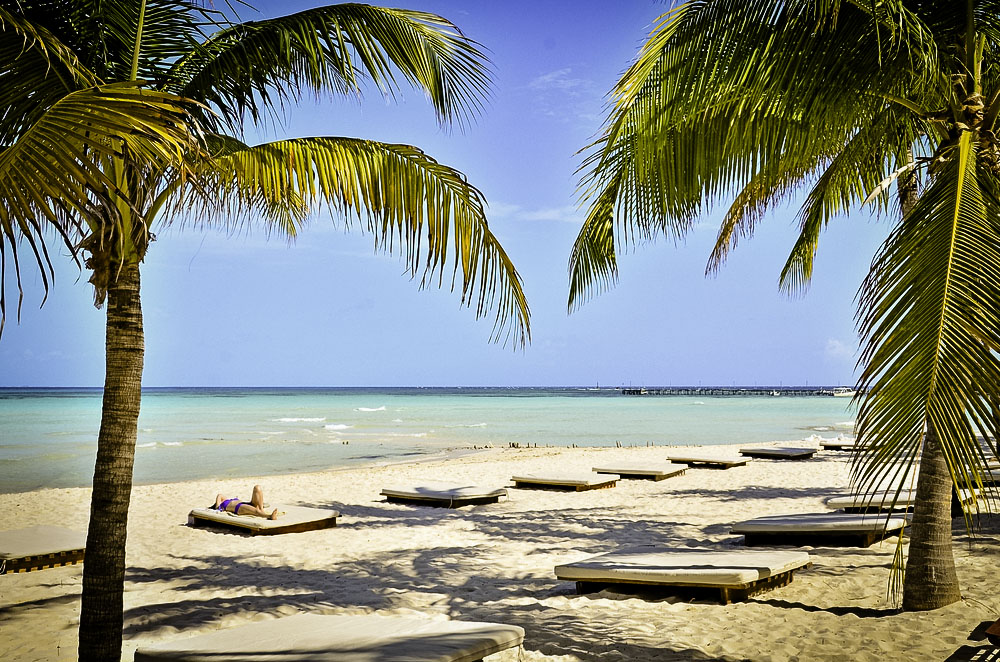
There is a whole ONG that observes the behavior of sargassum with satellite images, drones, and boats to know where, when and in what volume it is going to arrive.
Thanks to this monitoring, you can know in real-time the state of the beaches.
In most cases, in the morning there are already clean beaches for you to enjoy.
Remember that there are beaches that are always clean, such as Playa Norte. Don’t forget: there is no sargassum on Isla Mujeres.
Stay at the hotels located on the beaches that are least likely to receive sargassum.
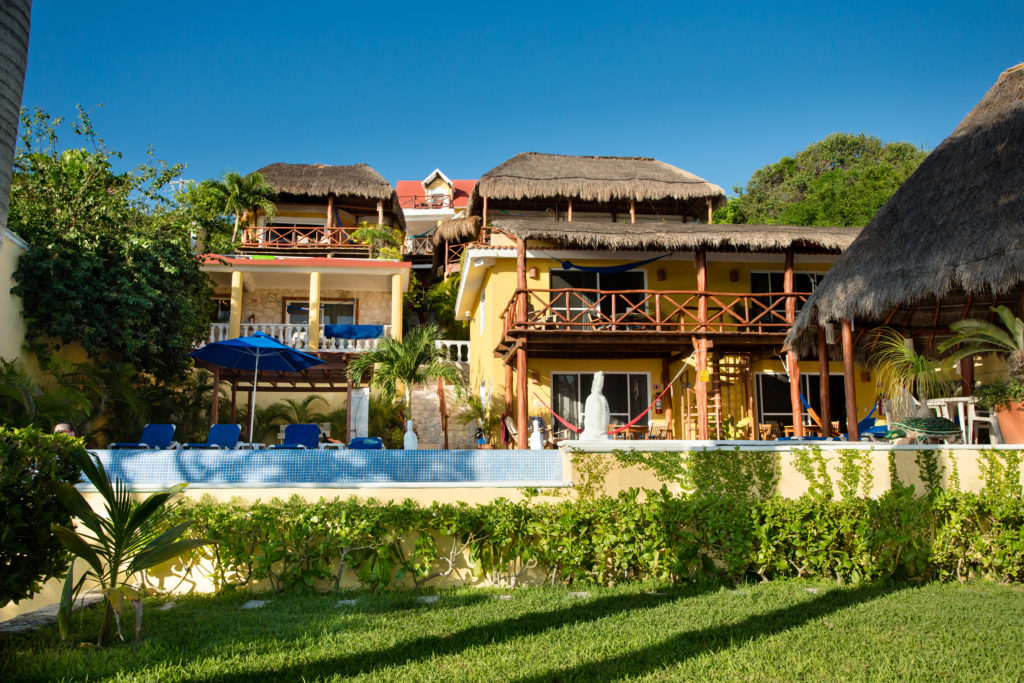
We recommend you play it safe and stay in Isla Mujeres. Its permanently turquoise beaches await you for an unforgettable summer.
The Hotel la Joya team will be waiting for you. Where in addition, you can enjoy private access to the beach and an environment surrounded by nature.
We are taking the strictest hygiene measures so that you can travel safely.
Have a plan B.
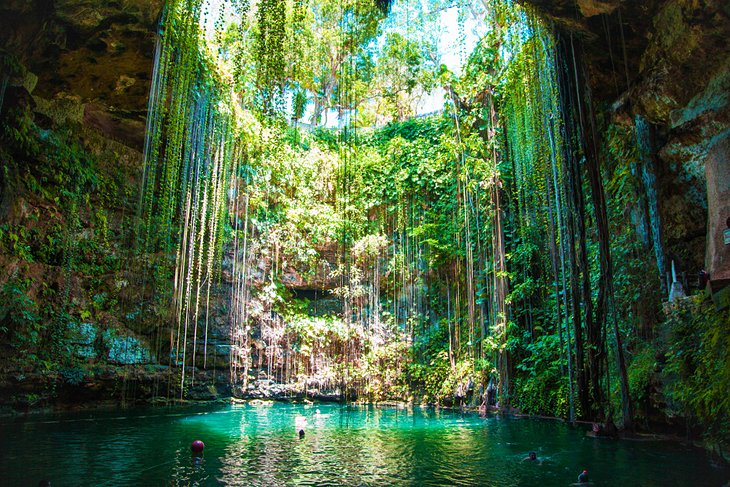
Have you heard of cenotes?
A cenote is a deep water-filled sinkhole, which is fed by the filtration of the rain and by the currents of the rivers that are born in the heart of the earth.
They are the ideal option for swimming on hot days. The water in a cenote can reach a maximum of 24 ° C or 75.2 F°
Another option could be to visit an archaeological zone, such as Chichen-Itzá. Visiting this Wonder of the World could take you a whole day.
In addition, in the area, are different lagoons in which you can navigate and see incredible landscapes.
Now that you have all this information, you are ready to enjoy your vacation to the fullest. Sargassum will no longer be a problem and you may not even come across it on the beach if you decide to go to Isla Mujeres.
Take in that beautiful turquoise sea from your window at an oceanfront hotel like La Joya and swim on an algae-free beach.
You can also enjoy your holidays in a hotel where we take hygiene measures very seriously. All this so that you only worry about using sunscreen on the beach and enjoying everything Isla Mujeres has for you to the fullest.

Comments